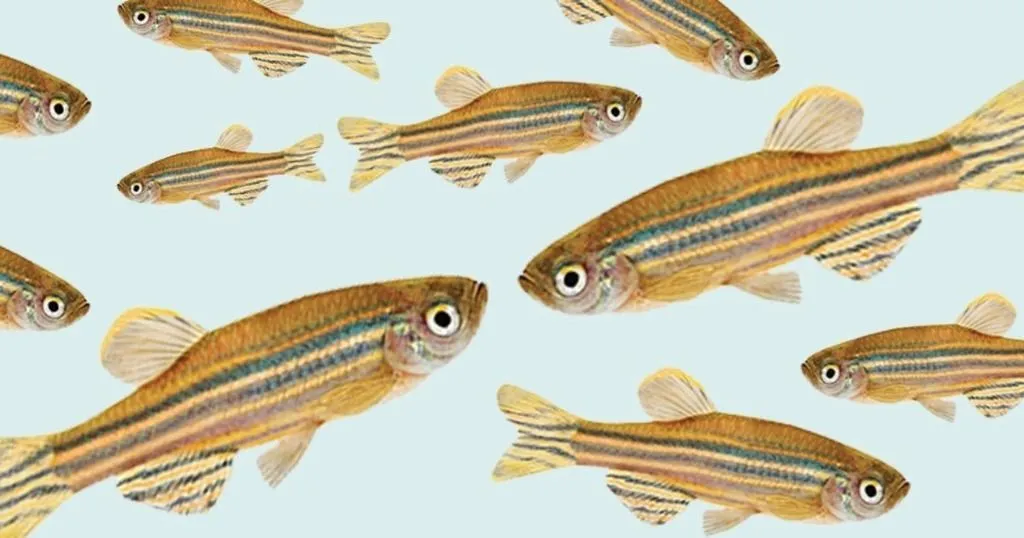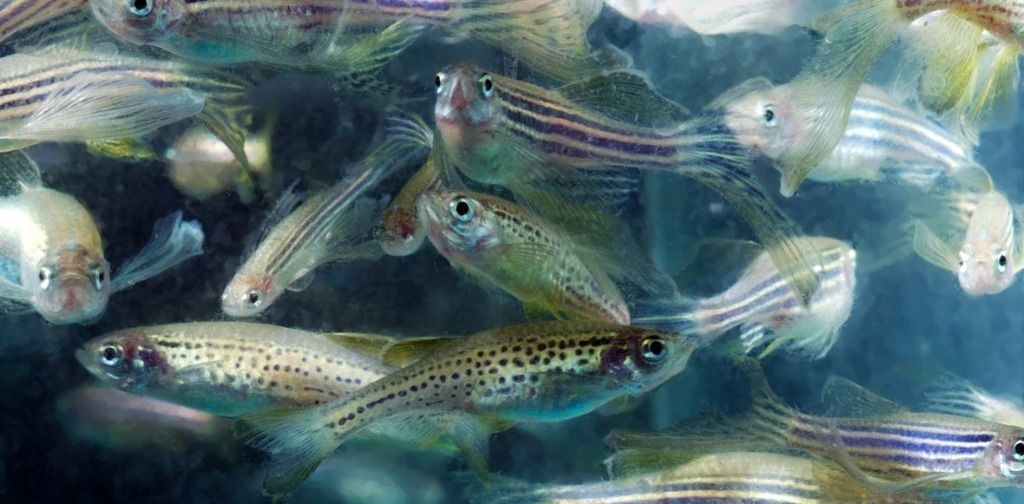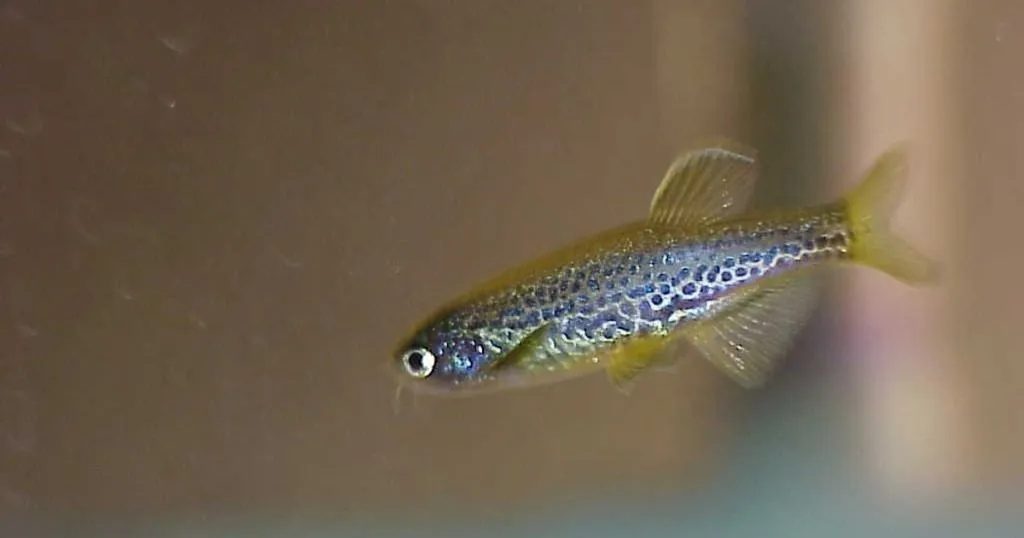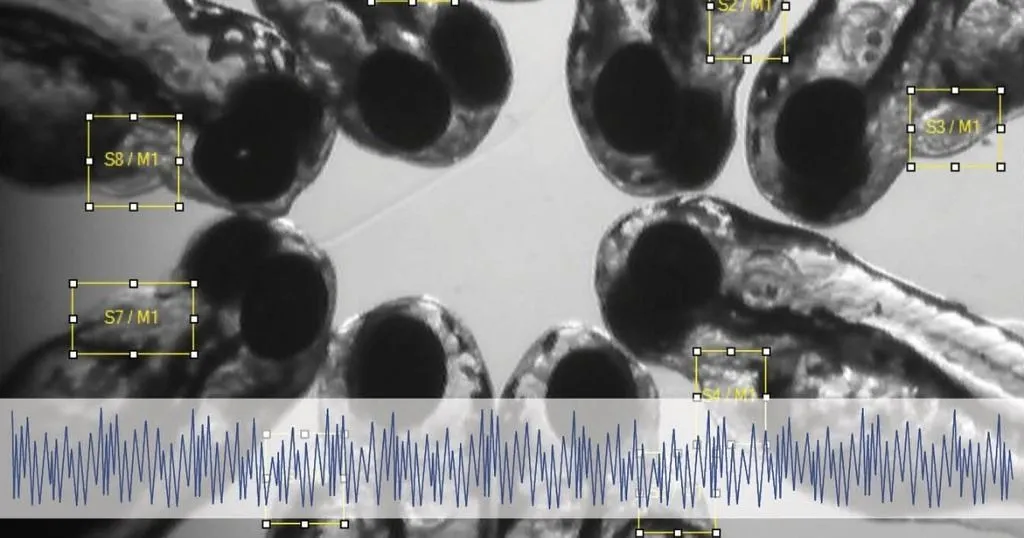Are fish empathic?
Ever wondered if fish can be empathetic towards each other? Find out in this blog how oxytocin plays a role in fish behavior!
Posted by
Published on
Thu 11 May. 2023
Topics
| Anxiety | EthoVision XT | Fish | Zebrafish |

Oxytocin is famously known as the 'love hormone' because it is released when people touch each other and it enhances bonding. It is also important in childbirth and stimulating milk production in new mothers. Moreover, it also affects social behaviors such as cooperation.
Oxytocin enhances trust by suppressing activity in the amygdala, which is the area of the brain regulating anxiety. Oxytocin can also help counter negative reactions. For example, if a partner of a prairie vole dies, it shows depressive-like behavior. However, if that prairie vole is given oxytocin, then the depression is prevented [1]. Furthermore, oxytocin has also been shown to reduce anxiety in embarrassing situations. Oxytocin plays a key role in empathy, and it is that aspect which we will look at further in this blog.
How does Oxytocin play a role in empathy?
Empathy is the ability to recognize the emotions that other people have and to respond appropriately. It is why we smile when we see people who are happy and why we are upset when we see someone in pain. Empathy is enabled by using a group of neurons in the brain called mirror neurons [2]. When you see someone smiling, your mirror neurons for smiling fire. They are the only neurons which are activated by the actions of other people rather than ourselves, and are the basic reason why we feel the emotions of others.
Providing oxytocin to people (by nasal spray) improves a subject's ability to be empathetic. They recognize emotions in facial expressions better and they are more likely to have a generous reaction. Better recognizing the facial expressions can be tested by making it difficult, for example by only showing the eyes rather than the whole face.

Compassion towards the group
Improved empathic responses, as a result of oxytocin, occur particularly when someone perceives the person that they are responding to as being in the same social group as themselves. Oxytocin can have an almost opposite effect on interactions between people of the same in-group and on responses to outsiders. If someone is perceived as being an outsider, then oxytocin can actually decrease the empathy towards them. This phenomenon indicates the importance of education and a broad experience to people outside our usual social group. This will enable a better understanding of people who look or act differently from ourselves and increase empathetic feelings towards them.
Empathy in other animals
I don't think it will be very surprising for many readers of this blog to hear that other mammals also have empathy mediated by oxytocin. Anyone who has petted a cat or dog will understand that. The stroking action stimulates oxytocin production, which causes bonding. What is perhaps more surprising, is that oxytocin also affects empathy for other animal groups, even including fish. We don't think of fish as showing emotions because they don't have facial expressions like mammals. However, it is now well-established that fish feel pain in a very similar way to mammals [3], so there is no reason to suppose that they don't experience other emotions as well.

The effect of oxytocin in fish
But, how does oxytocin work in non-mammals? Ibukun Akinrinade and her colleagues investigated the role of oxytocin in empathy in zebrafish [4]. They looked at fish displaying the same emotions (fear or distress) as other fish which they were watching, which is called emotional contagion. They measured fear behavior of the fish using Noldus' EthoVision XT video tracking software. Fear is characterized by erratic movement followed by freezing (not moving at all). Erratic movement was measured by EthoVision using the definition of when the fish had an acceleration of more than 8 cm/s² and more than 5 changes in direction of more than 90° per second (angular velocity). Freezing was categorized by EthoVision when the fish were swimming less than 0.2 cm/s. When fish are distressed, they emit an alarm substance, and this was also tested in the experiment.
Social transmission of emotions
Their experiments had three treatment groups to investigate the social transmission of fear. One group of fish could see other fish which had been exposed to the alarm substance (and thus those watched fish were showing fear behaviors). A second group were exposed to the alarm substance directly, and the third group was a control (no alarm substance and no sight of other distressed fish). Both the fish exposed to the alarm substance and the fish watching the fearful fish copied the fearful (erratic and freezing) behaviors but those in the control treatment did not. An advantage to a fish of copying the fearful behaviors of other fish is that if the fearful behaviors are caused by the fish seeing a predator, then other fish can respond appropriately without having to also see the predator, just like with alarm calls by birds.
Genetically modified fish
So those tests show that fear behaviors can be transmitted from one fish to another (which could be counted as empathy) just by watching. However, they do not prove whether or not oxytocin is involved. To look into that, the researchers made use of one of the reasons why zebrafish are so popular with scientists. It is possible to obtain all sorts of different genetic lines of zebrafish. In this case the researchers used three different mutant lines. One was fish which were unable to produce oxytocin (called oxt). The other two were for fish which were unable to detect oxytocin with two different receptors in the brain (oxtr and oxtrl). None of the fish in those three mutant lines increased their fear behavors when they were exposed to a distressed shoal of fish. If the fish which could not produce oxytocin themselves were injected with oxytocin, they did show the fear-like behaviors when watching other fish showing fearful behaviors.
Those experiments elegantly and conclusively prove that both that fish show empathic behaviors and that their empathy is regulated with oxytocin. The actual experiments were more complicated than described here. So, if you are interested, take a look at the study by Akinrinade et al.

Oxytocin and evolution
Because fish and mammals have the same complex mechanism for empathy, it is likely that it evolved millions of years ago, before fish and mammals split from each other in the evolutionary tree. If empathy had evolved independently in fish and mammals, then it would have had most likely a different working mechanism. Birds and reptiles don't have oxytocin, instead they have mesotocin, a hormore which is chemically similar to oxytocin and plays a similar role in regulating their behavior [5]. The fact that this has been conserved over such a long time, indicates just how important it must be. Social interaction often plays a key role in the evolutionary success of animal species, and empathy is clearly a key factor in that.
References
[1] Bosch OJ, Young LJ. Oxytocin and Social Relationships: From Attachment to Bond Disruption. Curr Top Behav Neurosci. 2018; 35:97-117. doi: 10.1007/7854_2017_10. PMID: 28812266; PMCID: PMC5815947.
[2] Rizzolatti G, Craighero L. The mirror-neuron system. Annu Rev Neurosci. 2004; 27:169-192. doi:10.1146/annurev.neuro.27.070203.144230
[3] Sneddon Lynne U. Evolution of nociception and pain: evidence from fish models. Phil. Trans. R. Soc. 2019; B374: 20190290. http://doi.org/10.1098/rstb.2019.0290
[4] Ibukun Akinrinade, Kyriacos Kareklas, Magda C Teles, Thais K. Reis, Michael Gliksberg, Giovanni Petri, Gil Levkowitz, Rui F. Oliveira. Evolutionarily conserved role of oxytocin in social fear contagion in zebrafish. Science379. 2023;1232-1237. doi:10.1126/science.abq5158. (The EthoVision parameters are described in the supplementary materials).
[5] Martina Stocker, Jonathan Prosl, Lisa-Claire Vanhooland, Lisa Horn, Thomas Bugnyar, Virginie Canoine, Jorg J.M. Massen, Measuring salivary mesotocin in birds - Seasonal differences in ravens' peripheral mesotocin levels. Hormones and Behavior. 2021; 134, 105015, https://doi.org/10.1016/j.yhbeh.2021.105015.
Related Posts
Studying zebrafish behavior using video tracking software

What we can learn from zebrafish in a T-maze

